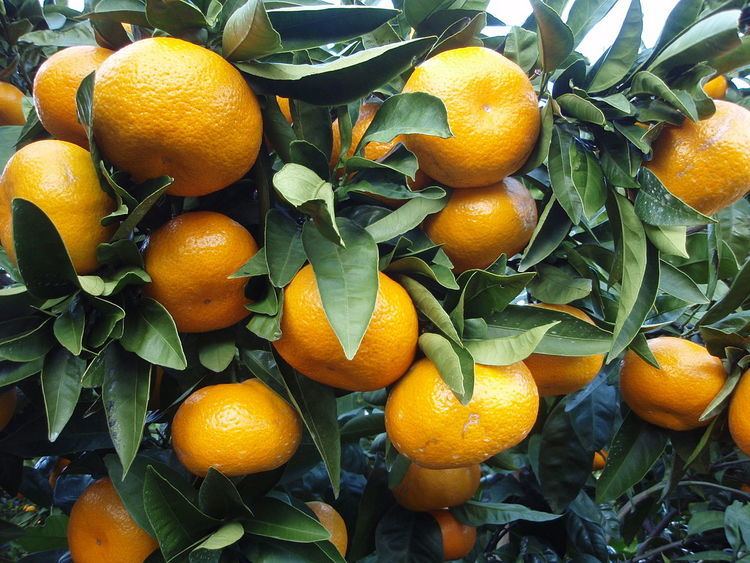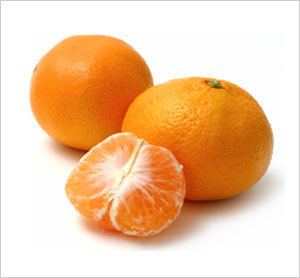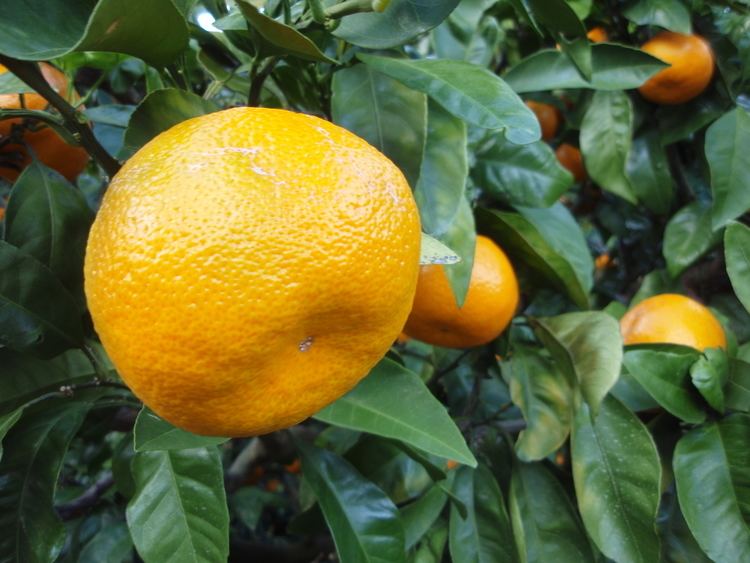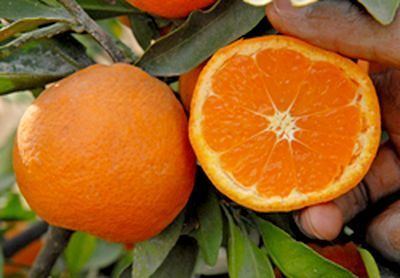Kingdom Plantae Family Rutaceae Scientific name Citrus unshiu Higher classification Citrus | Order Sapindales Genus Citrus Rank Species | |
 | ||
Similar Dekopon, Tangerine, Clementine, Amanatsu, Kumquat | ||
Citrus unshiu is a seedless and easy-peeling citrus species, also known as unshu mikan, cold hardy mandarin, satsuma mandarin, satsuma orange, and tangerine. It is of Chinese origin, but introduced to the West via Japan.
Contents
- Nomenclature
- Classification
- Characteristics
- History
- Varieties
- Possibly not hybrids
- Unshiu hybrids
- References

Nomenclature

In China, it is known as Wenzhou migan (Chinese: 温州蜜柑; pinyin: Wēnzhōu mìgān); in Japan, it is known as mikan, or formally Unshū mikan, the Japanese reading of the characters used in Chinese. In both languages, the name means "honey citrus of Wenzhou" (a city in Zhejiang province, China). An alternative Chinese name, (Chinese: 无核桔; pinyin: wúhé jú), means "seedless mandarin".

One of the English names for the fruit, "satsuma", is derived from the former Satsuma Province in Japan, from which these fruits were first exported to the West.

The Afrikaans name naartjie is also used in South African English. It came originally from the Tamil word nartei, meaning citrus. The word has been used in South Africa since 1790, but the first recorded use in written English is by Lawrence Green in Tavern of the Seas, 1947.
Classification
Under the Tanaka classification system, Citrus unshiu is considered a separate species from the mandarin. Under the Swingle system, unshius are considered to be a group of mandarin varieties.
Characteristics
Its fruit is "one of the sweetest citrus varieties, with a meltingly tender texture" and usually seedless, about the size of other mandarin oranges (Citrus reticulata). One of the distinguishing features of the satsuma is the thin, leathery skin dotted with large and prominent oil glands, which is lightly attached around the fruit, enabling it to be peeled very easily in comparison to other citrus fruits. The satsuma also has particularly delicate flesh, which cannot withstand the effects of careless handling. The uniquely loose skin of the satsuma, however, means that any such bruising and damage to the fruit may not be immediately apparent upon the typical cursory visual inspection associated with assessing the quality of other fruits. In this regard, the satsuma might be categorised as a hit-and-miss citrus fruit; the loose skin particular to the fruit precluding the definitive measurement of its quality by sight and feel alone.
Satsumas grown in humid areas may be ripe while the skin is still green.
History
Jesuits brought the fruit from Asia to New Spain. Groves were started by Jesuits in the 18th century in the Jesuit Plantation upriver from New Orleans. The Municipal Street "Orange" in New Orleans, was originally named "Rue Des Orangers" and the site of the Jesuit grove. The groves were later re-cultivated farther south in Plaquemines Parish, Louisiana to provide greater protection from harmful frosts, and have continued to the present day. The Becnel family are the largest growers of Louisiana Citrus.
The fruit became much more common in the United States starting in the late 19th century. In 1876 during the Meiji period, Owari mikans were brought to the United States from the Satsuma Province in Kyūshū, Japan, by a spouse of a member of the U.S. Embassy, who renamed them satsumas. Between 1908 and 1911 about a million Owari mikan trees were imported throughout the lower Gulf Coast states. Owari is still commonly grown in Florida. The towns of Satsuma, Alabama; Satsuma, Florida; Satsuma, Texas; and Satsuma, Louisiana were named after this fruit. By 1920 Jackson County in the Florida Panhandle had billed itself as the "Satsuma Capital of the World." However, the commercial industry was damaged by a −13.3 °C (8.1 °F) cold snap in 1911, a hurricane in 1915, and a very cold period in the late 1930s. Satsumas are cold-hardy, and when planted in colder locations, the fruit becomes sweeter from the colder temperatures. A mature satsuma tree can survive down to −9 °C (15 °F) or even −11 °C (12 °F) for a few hours. Of the edible citrus varieties, only the kumquat is more cold-hardy. Satsumas rarely have any thorns, an attribute that also makes them popular. They can be grown from seed, which takes about 8 years until the first fruits are produced, or grafted onto other citrus rootstocks, trifoliate orange being one of the most popular.
Citrus unshiu is grown in Japan, Spain, central China, Korea, the US, the tip of South Africa, South America and around the Black Sea. It is also grown in the Neretva valley in Croatia.
Varieties
Unshiu varieties cluster in the mandarins. There are, however, some hybrids.
